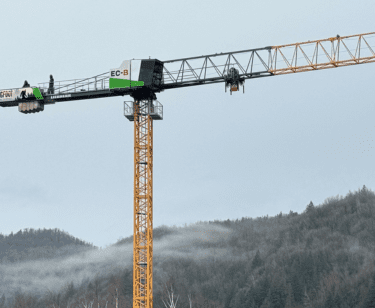Navigating Insurance Premiums in Construction

Navigate the complexities of insurance in the construction industry including strategies to secure the best coverage, including understanding market trends, prioritizing safety to minimize costs, and smartly comparing insurance rates.
Maximizing Efficiency with the Liebherr 81 K.1 Fast-Erecting Crane

The Liebherr 81 K.1 Fast-Erecting Crane, offered by Bigfoot Crane Company blends innovation, safety and versatility. Perfect for diverse projects, it features a smart, adaptable design for easy setup and efficiency for your construction needs.
Why the Liebherr K Series are the Best Self-Erecting Cranes for British Columbia’s Lower Mainland

Discover the Liebherr K Series cranes, ideal for B.C.’s Lower Mainland construction. These versatile cranes excel in tight spaces with powerful lifting capabilities, enhancing project efficiency and safety.
Navigating Tower Crane Rentals vs. Sales: Bigfoot Crane Company’s Guide for Construction Managers

Explore Bigfoot Crane Company’s guide on tower crane rentals vs sales. Offering expert advice, cost-effective solutions, and advanced crane technologies for your construction needs in B.C.’s lower mainland.
The Liebherr 125 EC-B Arrives and Ready To Rent At Bigfoot

Bigfoot Crane Company is expanding its rental service with the addition of the advanced Liebherr 125 EC-B 6 crane. Known for its precision, power, and versatility, the crane is available for rent, offering construction professionals innovative solutions for various projects.
Preparing Your Construction Project for Winter

This guide outlines steps for preparing construction projects for winter, focusing on worker safety, equipment maintenance, and using appropriate accessories; emphasizing the importance of preparation and adaptation for successful winter construction.